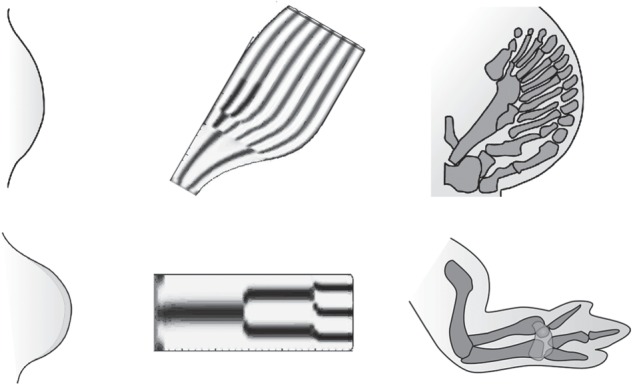Figure 2.

Gnathostome paired appendage development and hypothesized Turing mechanism for skeletal pattern formation. Early-stage embryonic limb buds (left column) and late-stage embryonic skeletons (right column) are shown for two gnathostomes, the Japanese catshark, a cartilaginous fish (top row) and the chicken, a tetrapod (bottom row). Morphogenetic toolkit molecules have been shown experimentally to interact in Turing-type reaction–diffusion networks in the limb bud mesenchyme of several tetrapod species, where they mediate patterned skeletogenesis. This suggests that ancestral fin tissues may have contained primitive versions of such networks that became ‘tuned’ over the course of evolution to generate the stereotypical limb skeletons of tetrapods. The middle column shows the results of computer simulations of a reaction–diffusion network with parameter choices showing, in principle, that the distinctive patterns of distantly related gnathostomes can be generated from a single patterning mechanism with no change in network topology [74].
